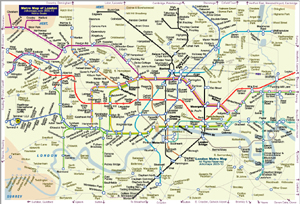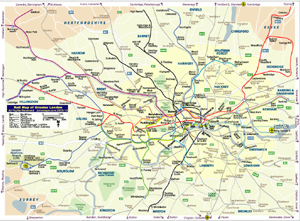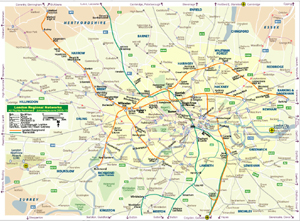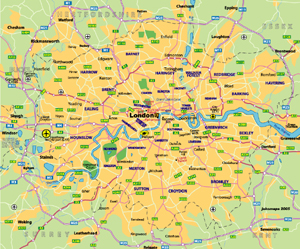倫敦別名:
Londinium (拉丁語)
Londres (法語,葡萄牙語,西班牙語)
Londra (意大利語)
倫敦
(From Wikipedia)
Copyright owned by wikipedia.org
See
here for copyright and licensing conditions
The name London is commonly thought to have come from the Latin name Londinium, as London was founded by the Romans during their reign over the land, around AD 43?although there is some slight evidence of pre-Roman settlement. The BBC History website, however, claims that the name Londinium is actually "Celtic, not Latin, and may originally have referred to a previous farmstead on the site"; the root is 'Lond' meaning 'wild' (i.e. overgrown or forested) place. This fortified Roman settlement was the capital of the province of Britannia. According to findings displayed in London Museum, the initial language of London was Latin with much Greek spoken due to the presence of Greek speaking Roman soldiers and businessmen. Another suggestion for where the name of the city comes from could be that of the mythical leader, King Lud. It was said that Lud laid out the first set of roads in the city. His statue can be seen hidden at the church of St Dunstan's In The West, Fleet Street.Around AD 61 the Iceni tribe of Celts lead by Queen Boudica stormed London and took the city from the Romans. The Celts burnt the relatively new Roman town to the ground, and archaeological digs have revealed a layer of red ash beneath the City of London, which is believed to be the burnt remains of the old Roman town.
After the fall of the Roman Empire, Londinium was abandoned and a Saxon town named Lundenwic was established approximately one mile to the west in what is now Aldwych, in the 7th century. The old Roman city was then reoccupied during the late-9th or early-10th century.
Westminster was once a distinct town, and has been the seat of the English royal court and government since the mediŠval era. Eventually, Westminster and London grew together and formed the basis of London, becoming England's largest ?though not capital ?city (Winchester was the capital city of England until the 12th century).London has grown steadily over centuries, surrounding and making suburbs of neighbouring villages and towns, farmland, countryside, meadows and woodlands, spreading in every direction. From the 16th to the early-20th century, London flourished as the capital of the British Empire.
In 1666, the Great Fire of London swept through and destroyed a large part of the City of London. Rebuilding took over 10 years, but London's growth accelerated in the 18th century, and, by the early-19th century, it was the largest city in the world.
London's local government system struggled to cope with this rapid growth, especially in providing the city with adequate infrastructure. In 1855 the Metropolitan Board of Works was created to provide London with infrastructure to cope with its growth. In 1889 the MBW was abolished, and the County of London was created which was administered by the London County Council, the first elected London-wide administrative body.
[Read
full article]
|




